How many calories are in a glass of white wine? Well, let us answer that today!
White wines are one of the crowd favorites. There are many things to like about them, after all. Well, today, we will find out if there is another thing we can add to the long list of things we like about these wines. Without further ado, let us dive right into it!
How Many Calories in a Glass of White Wine?
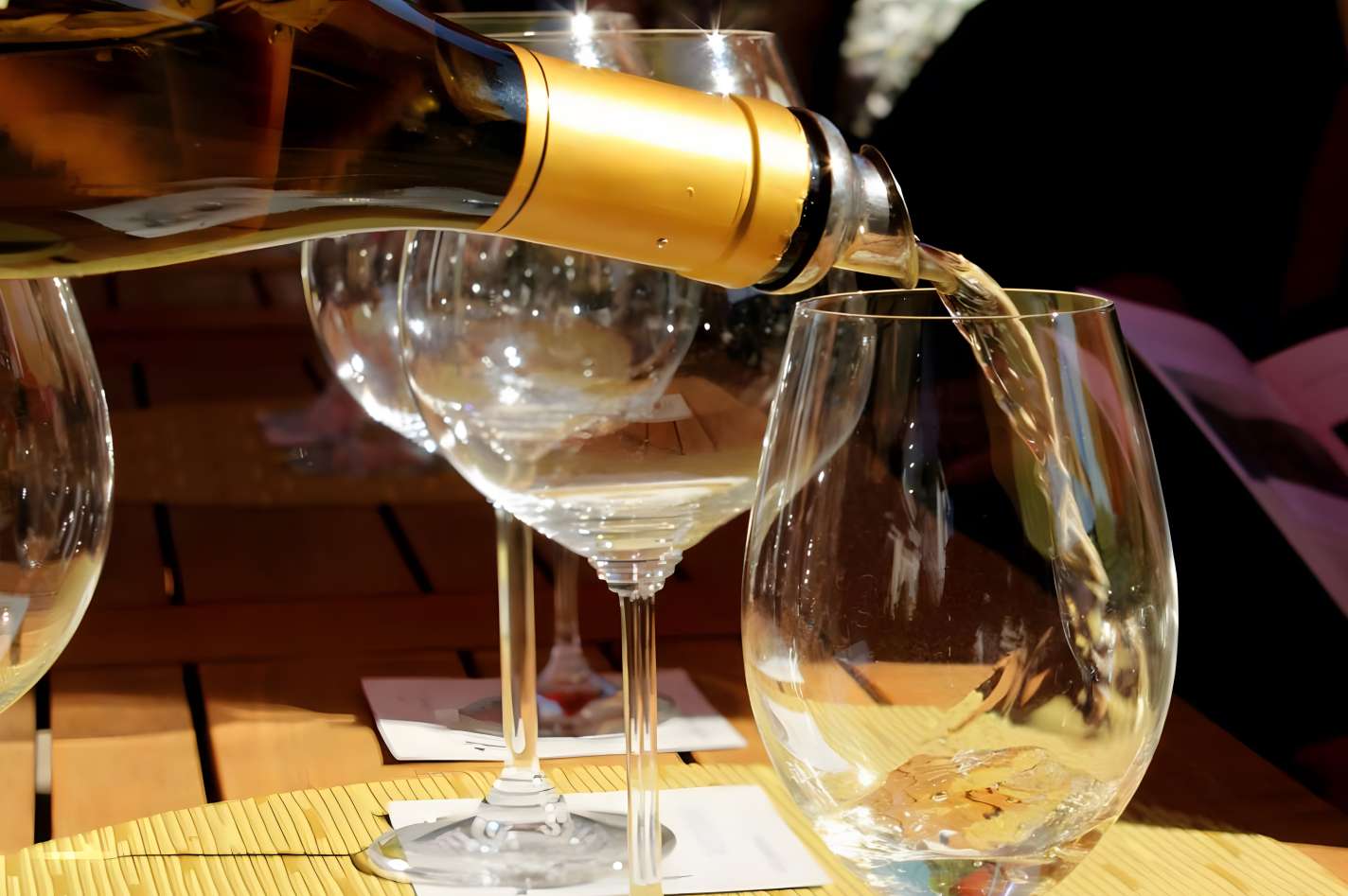
Generally, a serving of wine should have 5 oz, but this is only a serving size suggestion by the U.S. Department of Health and Human Services. The serving size could change from one place to another. However, to ensure we are on the same page, we will follow this serving size suggestion in this discussion.
On average, an ounce of white wine has approximately 24 calories. With that, a glass of white wine would have around 120 calories. To take things further, a bottle of white wine would have roughly 600 calories. However, as you might already know, there are many types of white wines out there, and they are not all the same.
Now, this doesn’t only apply to taste and texture. That goes for calorie counts too. We will talk about the different white wines in a bit. For now, let us talk about sugar and alcohol content and how they affect the calorie count of white wines, as they are essential in the latter parts of our discussion.
The Sugar Content of White Wine and Its Calorie Count
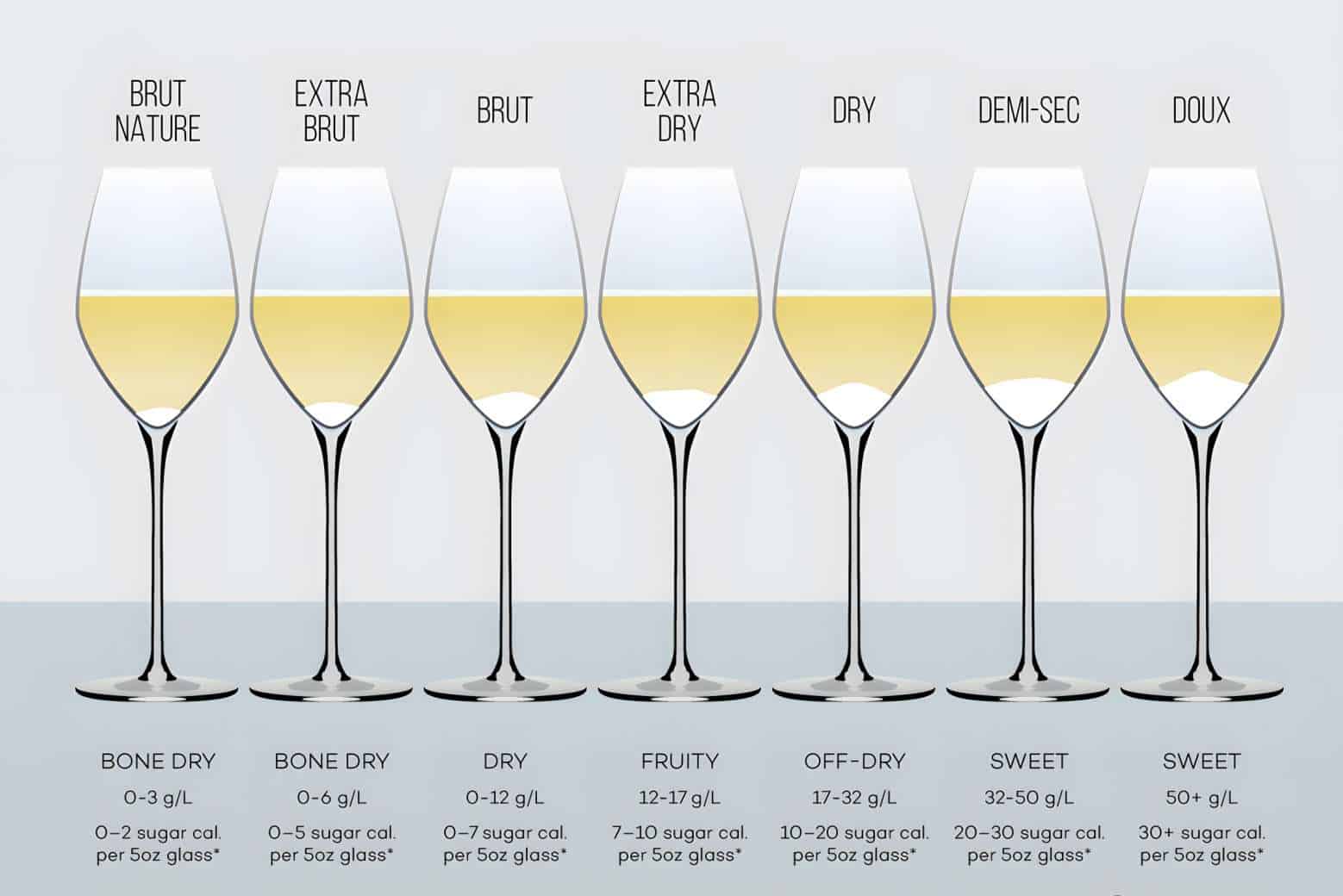
Several things can affect the calorie count of the different white wines. Maybe not surprisingly, one of those things is the sugar content of the wine.
A gram of sugar supposedly has around four calories. With that, the sweeter a type of white wine is, the more calories it is likely to have. The sweetness of white wine can be a good gauge when you do not know how many calories a white wine has.
However, sweetness should not be your sole indicator, as sugar isn’t the only contributor to a wine’s sweet taste.
The Alcohol Content of White Wine and Its Calorie Count
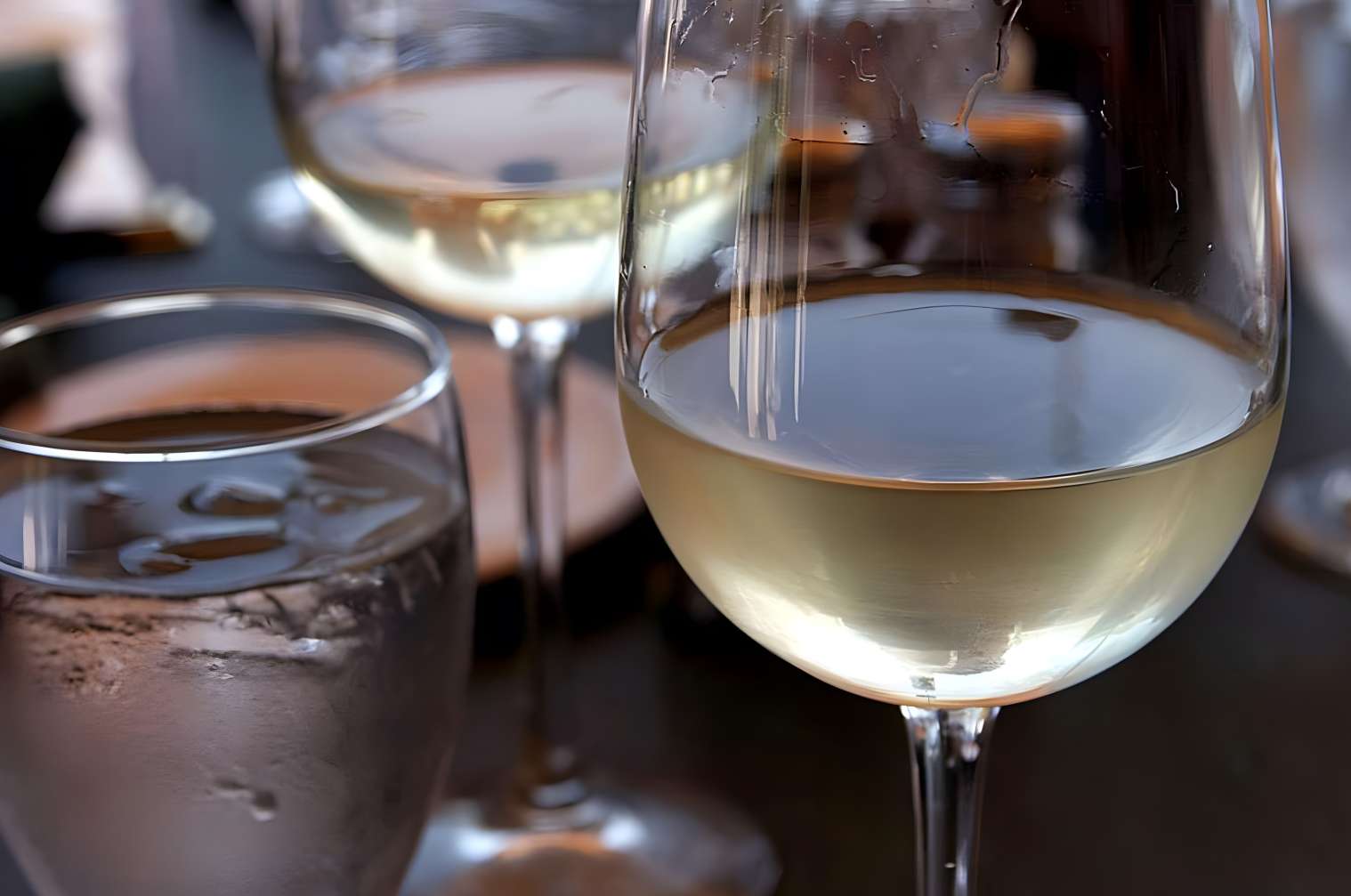
While one might assume that sweeter white wines have higher calorie counts, it’s not accurate to think that all sweet white wines always contain more calories than their less sweet counterparts. That is because, as we have said, several things affect the overall calorie count of white wine.
A gram of alcohol supposedly has around seven calories. As you can see, even if a white wine does not seem to be sweet to the taste, if it has a high alcohol content, it can have a higher calorie count than one that is overly sweet.
With that, alcohol content should not be your only gauge in quantifying the calorie count of wine too. However, the alcohol and sugar content are good ways to get a feel for how many calories a white wine has. These two things will be what we will use to show the calorie counts of the different white wines in the next section.
Different White Wines and Their Calorie Count
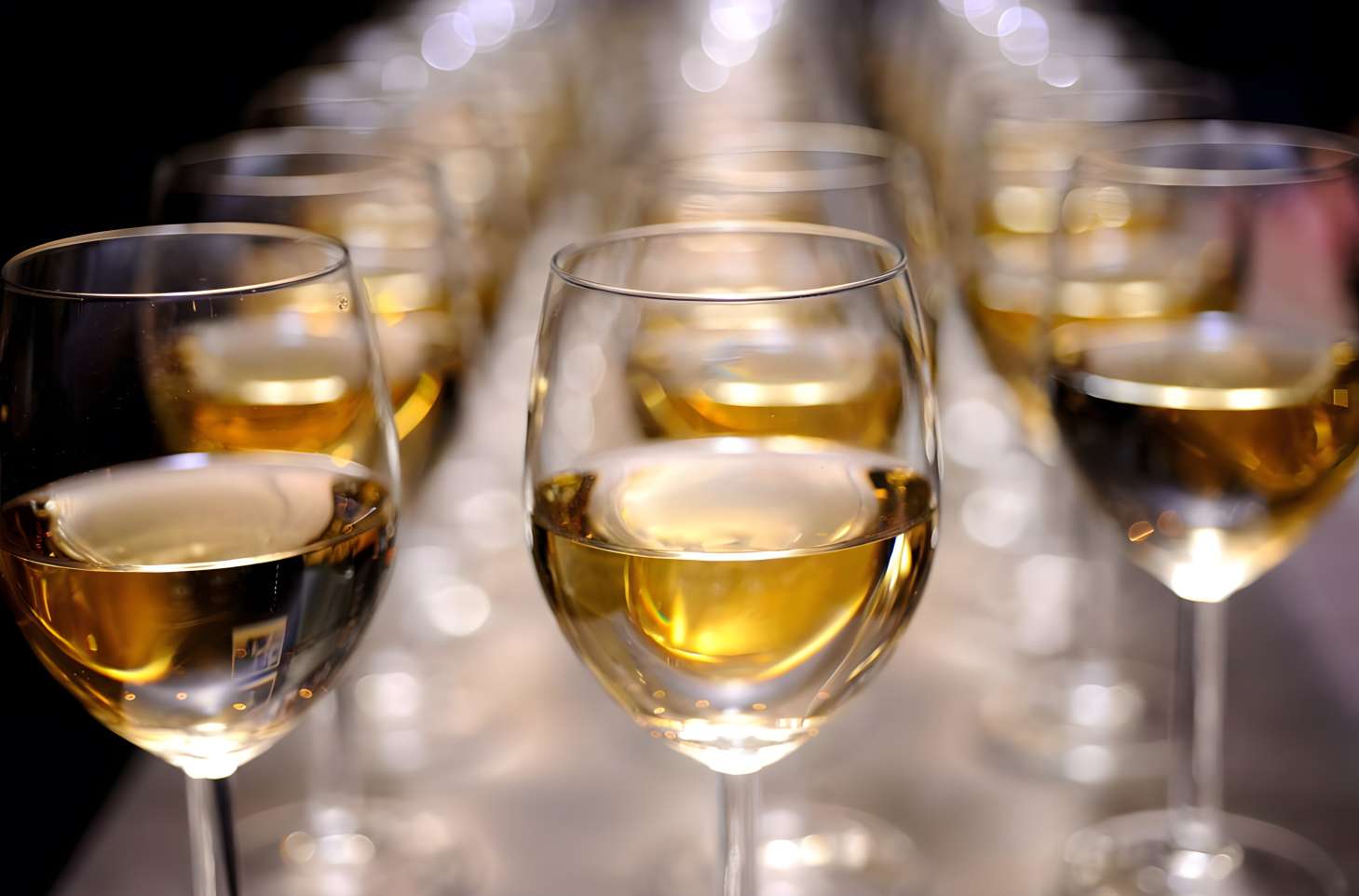
As we have said above, there are different types of white wines. Additionally, we pointed out that they do not all have the same calorie counts. However, they have similar ones. These seven white wines will help show that.
Calorie Count of a Glass of Chardonnay
Among the many different white wines, Chardonnay is one of the most popular. It has a fruity flavor but is not a particularly sweet wine. However, it does have high alcohol content. A glass of this wine supposedly has around 120 calories.
Calorie Count of a Glass of Gewürztraminer
This wine mostly has a lychee-like flavor and can be sweet, but it is not always so. However, it does seem it always has a high alcohol content. A glass of this wine can have as low as around 119 calories to as high as approximately 165 calories.
Calorie Count of a Glass of Moscato
This white wine has a peachy flavor and is sometimes also known as a dessert wine. As you can guess, it is one of the sweeter wines on this list. While it does have high sugar content, it only has a low alcohol content. With that, its calorie count does not stray from the average. A glass of this wine has around 122 calories.
Calorie Count of a Glass of Pinot Grigio

This white wine is known as one of the healthiest white wines. It has a moderate alcohol content and a low sugar content. However, it does offer a great flavor. A glass of this white wine has around 122 calories.
Calorie Count of a Glass of Prosecco
This white wine has a low sugar and alcohol content. However, it does offer a fruity flavor, so you do not need to worry if you like your sweet stuff. It is one of the most low-calorie wines out there. A glass of this wine only has around 80 calories! You can have an extra serving of this one and not worry about your low-calorie diet at all!
Calorie Count of a Glass of Riesling
This wine has a low sugar content, but more than Prosecco. Additionally, it also has moderate amounts of alcohol. It tastes like citrus and peaches mixed with some other fruits. A glass of this wine should have around 120 calories.
Calorie Count of a Glass of Sauvignon Blanc
This wine has a low sugar content, but it does have high alcohol content. It has a fruity flavor mixed in with a hint of bell pepper flavor. A glass of this wine has around 119 calories.
Calorie Count of the Different White Wines
We now know the calorie counts of seven of the most popular types of white wines. However, to better see the differences among the seven, let us look at this table. We have listed the calorie count for each glass, as well as for the whole bottle here. If you plan on getting a white wine next time you go out, this table will hopefully help you with that.
| White Wine | A Glass | A Bottle |
| Chardonnay | 120 | 600 |
| Gewürztraminer | 119 to 165 | 595 to 825 |
| Moscato | 122 | 610 |
| Pinot Grigio | 122 | 610 |
| Prosecco | 80 | 400 |
| Riesling | 120 | 600 |
| Sauvignon Blanc | 119 | 595 |
As you can see, white wines can generally easily fit into a low-calorie diet. You can let yourself have a few glasses without worrying. If you have been a fan of white wines for all their charms, you can add their low-calorie feature to the list!
On the other hand, you have also seen that different white wines have varying calorie counts. While white wines generally have a low-calorie count, you might still want to check before adding a bottle to your rack. Some white wines are not ideal for a low-calorie diet, after all.
Calorie Count of Different Kinds of Drinks
To better understand the calorie count of white wine, let us compare it with some other drinks here.
| Drink | Calorie (Normal Serving Size) |
| Milk (Whole) | 138 (8 oz) |
| Cola | 139 (12 oz) |
| Red Wine | 125 (5 oz) |
| Rosé Wine | 104 (5 oz) |
| White Wine | 120 (5 oz) |
As you can see, when compared to other common drinks, white wine is second to the lowest in calorie count.
However, as you already know, there are many different types of milk, cola, red wine, rosé wine, and white wine. This table only shows the general averages. It is possible to find kinds of these drinks with lower calorie counts than the ones stated in this table.
You might also have noticed that the serving sizes for milk and cola are larger. That is because these are the usual serving sizes for these two. While they would have a lower calorie count when you bring them down to a serving of 5 oz, you do not often find them served in such quantities.
Summary
How many calories are in a glass of white wine? Well, we answered this question today and learned that a glass of white wine has around 120 calories.
After that, we also discussed how each type of white wine has different calorie counts. Here, we showed you some white wines and how many calories are in each glass of these wines.
Finally, to further make sense of the numbers, we compared the calorie count of white wines to other drinks. Here, we learned that white wines have a lower calorie count than many drinks!
We hope this provides a satisfactory answer to your query. If you have other questions about white wines or wines in general, feel free to visit our other wine discussions! Cheers!
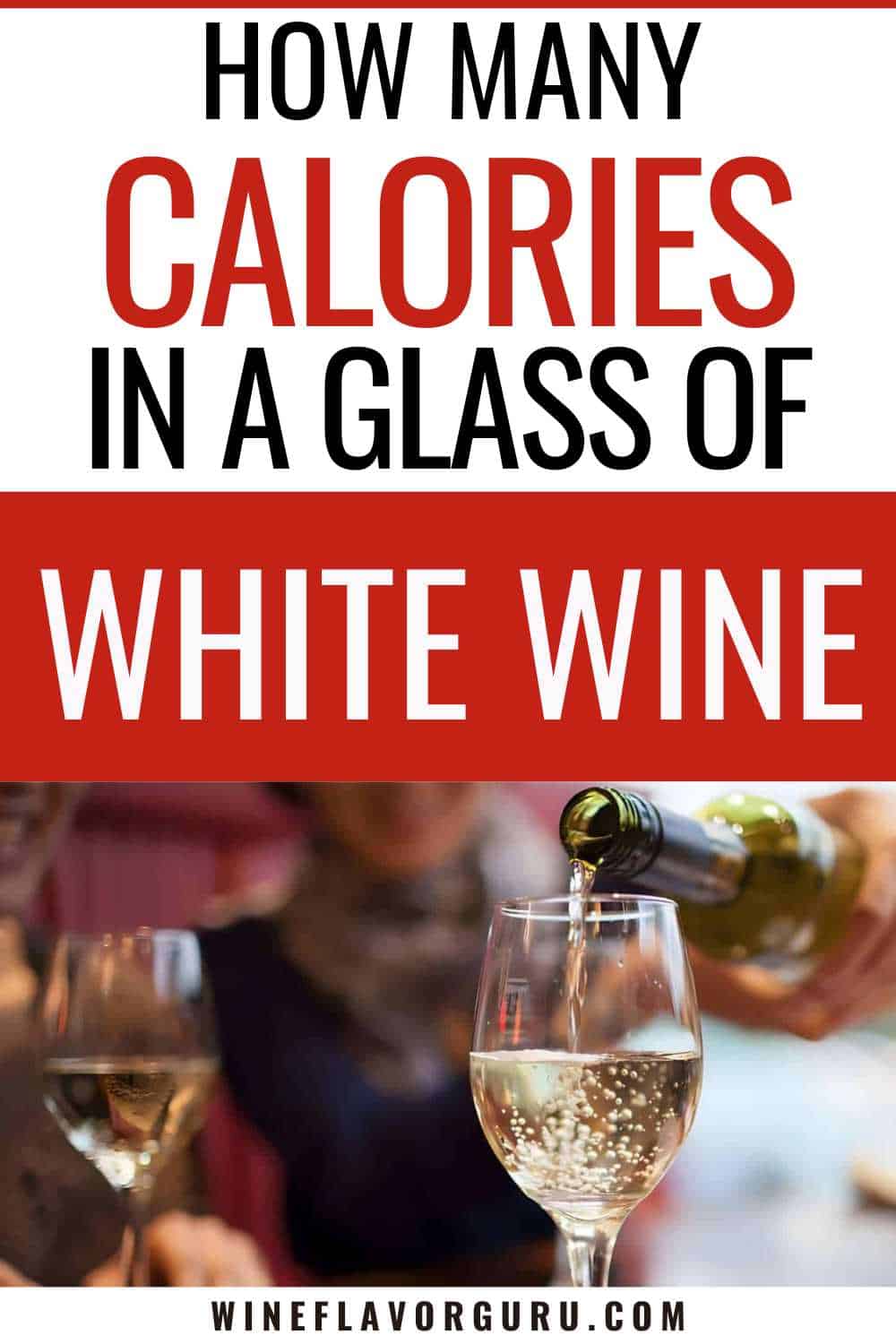

George Moore, co-founder of Wine Flavor Guru, is a charismatic entrepreneur with a rich background in California’s wine industry. Alongside Sylvia, he transformed a Sonoma County vineyard into a source of premium wines. George’s expertise in sourcing exceptional grapes and his approachable style make wine appreciation both accessible and engaging.
